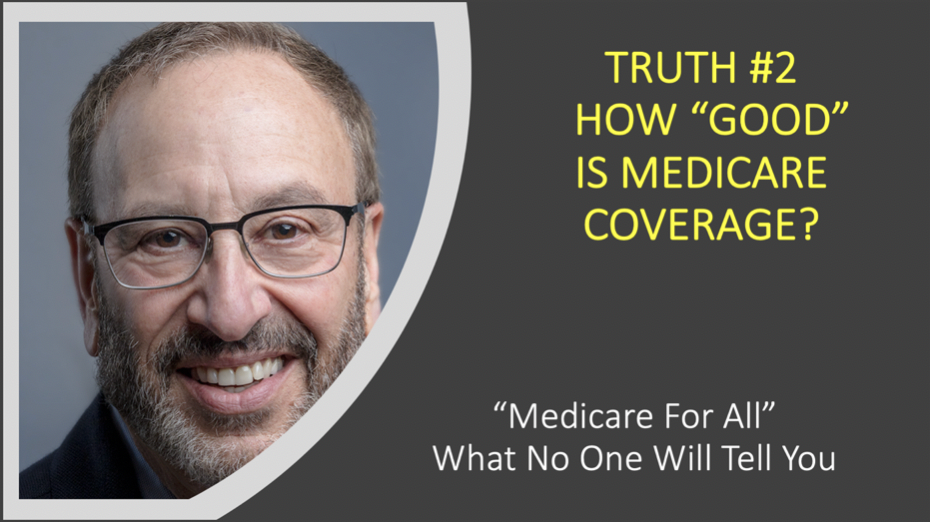 By Denny Weinberg
By Denny Weinberg
Background
In the mid 1960’s, Medicare was first created as a “Social Insurance Program”, designed to be consistently applied to all older Americans. Comprehensive, inexpensive, and relevant to the standards-of-care at the time, this was considered “Good” Coverage.
But the passing of years unveiled a multitude of unanticipated dynamics.
- For example, the very definition of “health care” has both broadened and deepened materially since 1965. The first MRI or the first Angioplasty would not occur until a decade later.
- Meanwhile, the age-65 life expectancy has expanded by nearly 50% since then, exposing the medical system to care demands and opportunities never contemplated, late in life.
- While care technology, science and processes have responded to this expanding demand, they brought with them dramatically accelerating costs, year after year.
- Finally, political pressures to respond to special populations, including dialysis patients, or emerging care settings like home health or hospice, or even outpatient prescription drugs… all resulted in substantial Medicare Program scope creep.
So it should not be surprising that since inception, Medicare COVERAGE itself has required regular, often dramatic modifications to keep its “social insurance purpose” in balance with these and other continually changing demands. Some of that pressure has even challenged the highly protected “social Insurance” model itself:
- By the early 2000’s, these pressures yielded to means-based-pricing for seniors of varying income levels
- A 2013 survey of Americans over age 65 revealed “raising the age of eligibility to 67” as the second most popular to reduce costs and improve long term viability.
Americans Are Not Very Informed About Medicare
Most Americans (even beneficiaries) are not really aware of the full effect of these sequential program changes, because they have been spread out over many years. After all, the Medicare program has been around for 50 years, but most beneficiaries participate for less than a dozen years. So, many assume this program has been stable and mangable year after year, with surprising simplicity and effectiveness. But Medicare Coverage is not at all what it was 50 years ago.
Consider a small number of coverage dynamics between the late 1960’s and today:
Other coverage details and provisions have had to change along the way too, few offsetting the additional copayments, co-insurance, annual and lifetime limits or out-of-pocket cost exposure for beneficiaries.
Could Today’s Medicare Even Work Without The Private Market?
These exposures explain why most Medicare beneficiaries are compelled to purchase a supplemental private insurance plan to cover those costs not covered by today’s Medicare. Such private plans are called Medicare Supplement Plans, and they have been increasingly necessary as the exposures under the Traditional Medicare program have grown over the years. But they too have become expensive due to the the increasing uncovered portions of Medicare. Over the years, the average Medicare Supplement has increasing in price from less than $20 per month in the 1980’s to a few Hundred dollars per month today.
Alternatively, Medicare beneficiaries today can choose to leave Traditional Medicare altogether, and apply their “benefit equivalent eligibility” to the purchase of an alternative from a private Insurance company. These programs, called Medicare Advantage Plans, attract nearly 1/3 of all Medicare Beneficiaries who simply can’t make Traditional Medicare pencil out.
So What Does This Mean?
Most of the Medicare-For-All proposals don’t advertise the high coverage gaps in the current model, and the dependency on either a private market supplement (Medicare Supplement Plans), or private market alternative (Medicare Advantage Plans). Without these, Medicare-For-All will be woefully inadequate to meet the coverage expectations of Americans. Alternatively, Medicare-For-All proposals could completely re-invent what Medicare is , increasing its coverage and raising its price substantially.
Either way, it is going to cost a lot of money.
